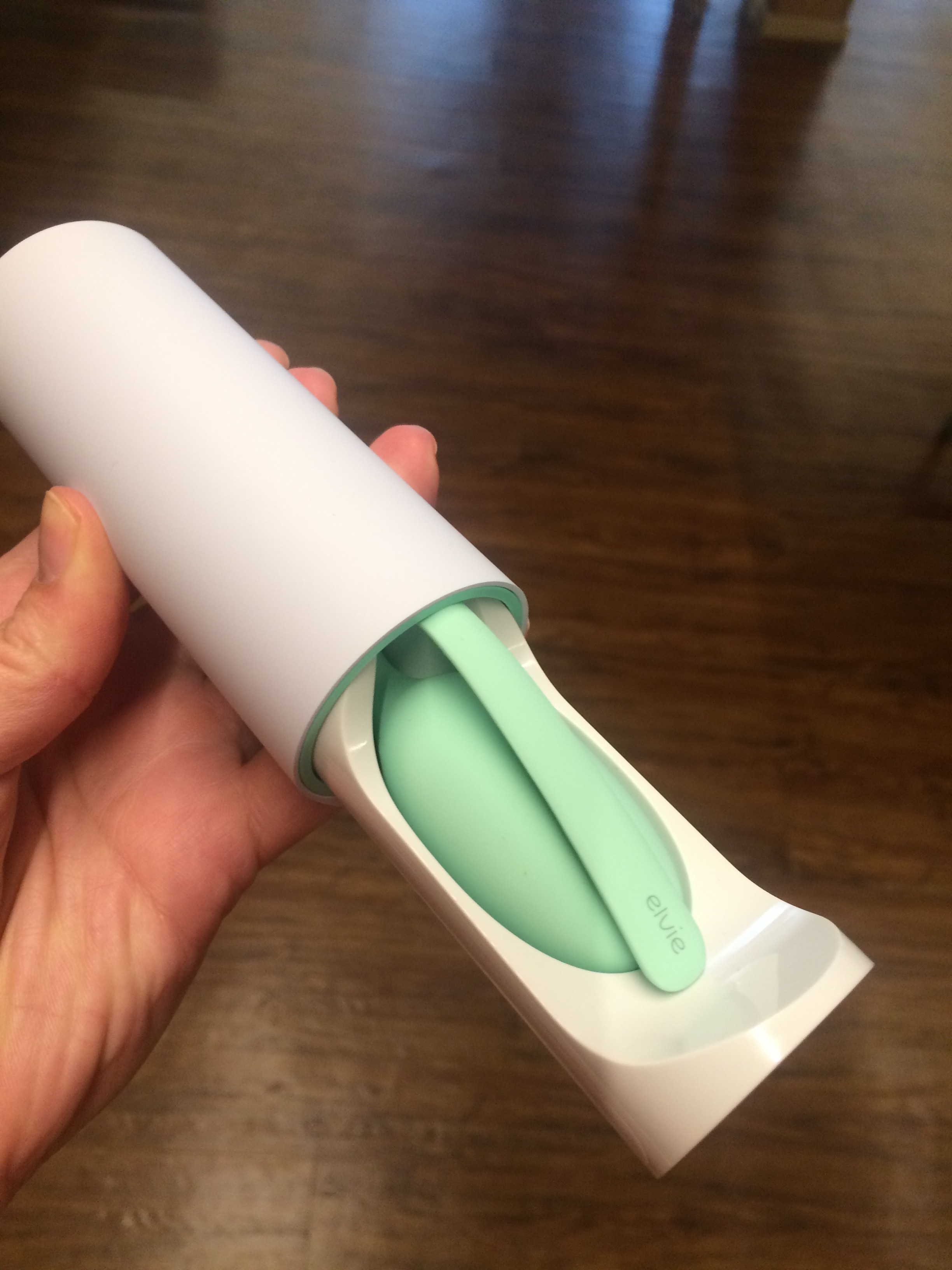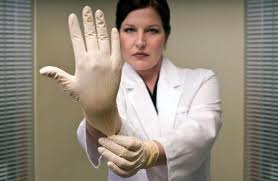Elvie has made me fall in love - for the first time ever with a pelvic floor device
/Most people can agree that having a pelvic floor that does its job is desirable, many people struggle with knowing how to optimize their pelvic floor muscle function.
The opinions about how to do a pelvic floor contraction, how many you should do, and why you should do them vary dramatically.
So what is a lady to do? There are an abundance of items that offer to help improve pelvic floor strength, cure incontinence, and give you better orgasms! Sounds like a win-win-win ! So why aren’t we all continent and having fantastic orgasms? This post will address the various products that are out there for ‘pelvic floor strengthening’. These products range from vaginal weights, Ben Wa Balls, vaginal barbells, electrical stimulation machines, to biofeedback machines.
While some of these products work wonders, some women discover that the device they’ve chosen don’t work for them. Why might this be? I propose 3 simple possibilities:
1) The device is not addressing the issue that needs to be addressed.
2) The device is being used improperly.
3) The device is not being used.
The pelvic floor muscles are just that: muscles. To function properly, the muscles need to be properly innervated, have good coordination ( the ability to contract and relax), and adequate strength.
I’m skeptical by nature about ‘new’ products, and the idea that they can really help a woman improve her pelvic floor function. (Notice I said ‘function’, NOT strength). I’m skeptical, but I have my reasons - I've been a pelvic floor Physiotherapist for over 10 years now. I've watched products come and go. I've also helped clients sort through the products online, trying to find the one that would make working on their pelvic floor fun and effective. I've also chatted with those people later, and even if their pelvic floor issues have resolved, they admit that they've not used the product that they had invested so much time and money in purchasing.
Any of the devices I mentioned, both the weights and the biofeedback, can be used improperly. Weights don’t work well if you don’t know how to contract your pelvic floor properly. Biofeedback typically works one of two ways – via EMG (electromyography ) or using pressure. Both of these devices typically involve inserting a sensor (hard plastic or a air-filled balloon), which is then connected to a handheld monitor via a cord or tube. If the set up already sounds a bit complicated, it can be. Getting the sensor positioned properly, making sure all of the wires are connected, and get the monitor into a position where you can see it, and then start to actually do your pelvic floor contractions can be time and effort intensive for some people.
Once everything is situated and you’re ready to work, you need to consider what information you’re actually seeing about your performance. EMG biofeedback units will show you the relative change in the electrical activity in your pelvic floor muscles. This sounds high tech, but unfortunately it’s not as scientific as it may sound. These units utilize surface electrodes that are inserted into the vagina (or rectum). This means that the information is general – it’s not necessarily the muscle activity of the pelvic floor, but a general report of the activity in the area. There are several ways to get inaccurate readings, which may lead women to believe they are performing better (or worse!!) than they actually are.
Pressure Biofeedback has challenges as well. There are many variables that can skew the readings of a vaginal pressure biofeedback – holding one’s breath or pushing down (instead of contracting the muscles) can all give the appearance of a pelvic floor contraction.
Even if these devices were highly accurate in giving feedback regarding pelvic floor muscle function, the cumbersomeness of set up and multiple components to keep clean would challenge even the highly motivated consumer.
So is there a product out there that I would recommend to my friends and clients? There is now! I’d like to introduce you to Elvie!
Again, I tend to be a skeptic. I was given an Elvie to try from the brilliant ladies at the Women’s Health Foundation.
I opened the box, and I’ll be honest – it’s adorable. Simple packaging, and the device itself is sleek and elegant. Elvie comes in a little storage container, which is also the way you charge the device. I was impressed so far….
But how does it work?
I charged it up, and downloaded the app to my iPhone. There were just a few steps to set up the app, and I was ready to give this a go.
I settled into a treatment room, and started to follow the instructions on my phone. Once the Elvic is inserted, it sets about connecting to my phone via Bluetooth. NO WIRES!! I can move around comfortably without worrying about yanking anything out or breaking expensive equipment. I can even stand up and move around a bit!
I’d like to speak for a moment about the comfort of Elvie. It’s covered with a medical grade silicone (so no latex!), and was so comfortable. The size for me was comfortable, and many women would be able to accommodate the device as is. However they also include a silicone ‘custom sizing’ sleeve in every unit. More on that later.
Comfort and convenience? Check
Not scary or hard to use? Check
But does it actually work?? In my opinion – yes. Very well, in fact.
I was taken through a set up phase, and then my first work out. I appreciated the fact it was assessing both endurance holds, as well as ‘quick flicks’. We were off to a good start, but it got better….
During the long holds, I tried to cheat. When a contraction is done properly, there is a red gem that is lifted. It sets your ‘goal’ during the set up, so you have a target to hit. I wanted a good grade, so I did my best on the first few reps. Now to see if I could fool Elvie…. I squeezed my knees together. I pulled in my ads. I held my breath. I pushed down. The only way I could make that gem move was by doing a proper contraction.
I was further impressed when I moved onto the agility portion of the training. Reminiscent of Space Quarks (a video game of my youth), red gems streamed across the screen, and it was my job to contract at the right times to hit those gems. It was a really good challenge, but the feedback I got was amazing…. Guess who wasn’t relaxing all the way between contractions? This girl. Guess who encouraged me to relax more? Elvie.
My most consistent complaint about pelvic floor contraction (or Kegels) is that the emphasis tends to be on the contraction. The other units don’t really give accurate feedback on relaxation, and there are no norms. I love that Elvie takes into consideration that the relaxation is just as important as the contraction in a healthy pelvic floor!
At this point, I was very impressed with Elvie. So impressed that Sandy and I agreed to meet with a representative, Hannah, from Elvie. What I learned about the product and the company only increased how excited I am about this product. My 2 favorite points? 1) Elvie comes with a ‘custom sizing’ sleeve, for women who may need a slightly larger device to stay in place. The sleeve is included with each unit. The thoughtfulness of this almost brought me to tears. Hannah explained that there were 2 women in the testing groups who were more comfortable with a slightly larger device. They developed the sleeve, and decided to include it with every unit, rather than creating a situation where a woman would have to request a larger size. Pelvic health can be awkward for some women, so I’m grateful they’ve removed one barrier for women to get a device that fits appropriately.
2) During my attempts to cheat the results on Elvie, I did not know that if I cheated enough, Elvie would recommend consulting a pelvic health physiotherapist for some assistance before continuing the program. How amazing that a device has been developed that not only figured out a different way to measure pelvic floor strength and coordination, but to also to recommend whom to seek help from. You’re not sick if your pelvic floor doesn’t work well. You just need a person who is an expert in pelvic floor function to help guide you, and that person should be a pelvic floor physiotherapist.
Has the Elvie been extensively studied in pelvic health? Do we know long-term outcomes? Not yet. But they are gathering data, and working with health organizations in the UK to improve pelvic health on a larger scale. The design is elegant, clean (literally and figuratively), the set up and use is intuitive, and the method by which the pelvic floor performance is assessed is advanced far beyond what other pelvic floor biofeedback units have to offer. I can say happily that is this is the first device for pelvic health that I’m truly excited about on every level!
You can learn more about Elvie on your own at their website. If you'd like to see one in person, they were nice enough to give us a demo unit to have at Entropy! Shoot me an email, and I'm happy to show you how it works! A pelvic floor therapist can help you learn what you need to do to address any of your pelvic floor concerns, and if you need any other interventions before using Elvie. We're happy to offer guidance, if you feel like you need some! Good luck!
Thanks for reading,
Sarah





















